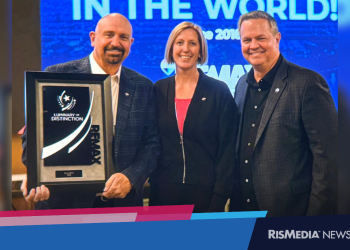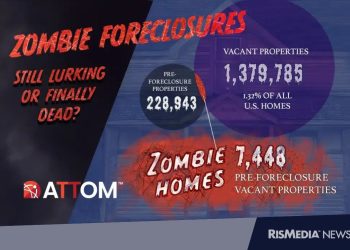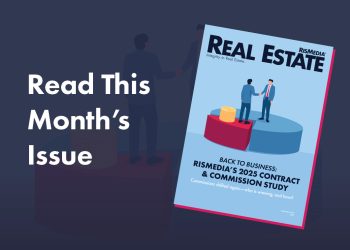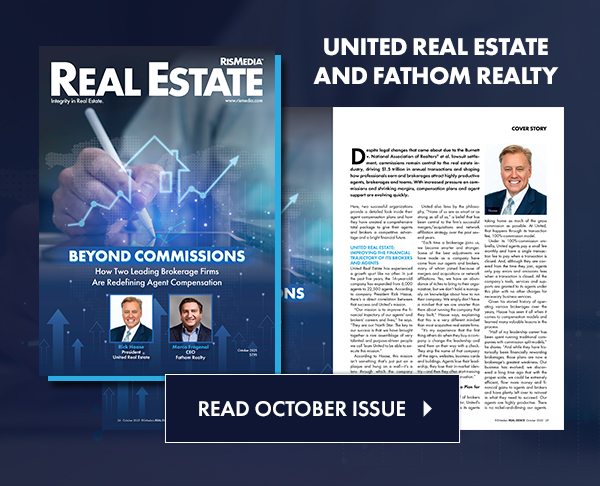The real estate industry is in a moment of reckoning. Traditional brokerages are folding. Mega-mergers are rewriting playbooks. Agents are jumping ship, unsure if the next model will hold.
We’re operating in the lowest housing market in 30 years, and the noise is deafening: layoffs, consolidations, lawsuits and headlines that read more like obituaries than opportunities.
And yet, beneath the chaos, something profound is happening; a quiet recalibration.
A call for a different kind of leadership: one built not on motion, but on mastery.
The next era of real estate won’t belong to those who move fastest; it will belong to those who evolve the deepest.
The leadership shift
There’s a moment every ambitious leader faces. It doesn’t arrive with applause or a new title. It comes in silence, the realization that your next level won’t come from doing more, but from leading differently.
Growth, at first, feels like a sprint. Later, it becomes a study in restraint.
Most never make it past the first stage because they confuse movement with momentum. But real evolution, the kind that reshapes both your leadership and your life, unfolds in three stages.
Stage one: the prover
This is the season of hustle. You’re running on adrenaline, coffee, ambition and a healthy dose of “watch me.” Every hour feels like an investment; every win is like validation. You say yes to everything because saying no feels like weakness.
The Prover stage builds the muscle of consistency. It teaches discipline, endurance and the mechanics of execution. But it also hides a trap—the belief that your worth is tied to your output.
In this stage, your identity is your effort. You are your results.
You measure success by what you can do yourself. You pride yourself on being indispensable, not realizing the same drive that made you powerful is now what’s keeping you small.
Many leaders live here forever, successful, exhausted and quietly restless. Because the moment you stop proving, you’re forced to face the harder question.
If this sounds like you, then you must be asking: What comes next?
Stage two: the builder
Stage Two begins the moment you realize you can’t scale chaos.
This is where leaders transition from personal output to organizational impact. The Builder doesn’t chase validation anymore; they chase structure. They start trading speed for systems, control for consistency and ego for execution.
This stage is quieter but harder. Spending hours perfecting that last Instagram reel that says “Here We Grow Again,” now seems to come with a moment of pause and reflection.
Letting go of control feels like loss—until you realize it’s the only way to grow.
You start documenting what once lived in your head. You start by creating playbooks, frameworks, workflows and dashboards. You hire not for help, but for ownership.
You move from reacting to designing, and somewhere in the process, a shift happens:
Leadership isn’t about having all the answers—it’s about creating environments where answers appear faster.
Builders think in systems, not sprints. They trade energy for efficiency, intuition for intention. It’s the stage that transforms a talented individual into a scalable leader.
A hard lesson
I learned this the hard way.
In my early years leading Legacy Living, our brokerage was growing fast—too fast. We had vision, momentum and heart, but not yet the infrastructure to sustain it. We expanded before alignment, built systems before culture and hired speed before strategy. And for a moment, it nearly broke us.
We were proving our potential because we were convinced that our foundation was built. That season taught me something no business school could:
Scaling prematurely can be just as dangerous as not scaling at all.
That experience humbled me into the next stage of leadership—one where, one where success wasn’t about volume, but about velocity with direction.
Stage three: the architect
This is the altitude of mastery, where execution gives way to vision and your job is no longer to build systems, but to design the culture that sustains them.
Architects don’t just lead teams. They design legacies.
At this level, you lead through principles, not playbooks. The focus shifts from doing and delegating to defining the why behind everything.
Architects understand that freedom doesn’t come from stepping back; it comes from structuring forward. They build frameworks that allow others to rise. They teach people how to think, not just what to do.
It’s leadership at its purest form: unhurried, intentional and deeply human.
You stop trying to be the smartest person in the room and start creating rooms full of smart people. You stop chasing recognition and start building resilience in others, in the business, in yourself.
And one day, you’ll look around and realize: the systems are running, the people are growing and the culture moves without constant supervision. That’s when you’ve crossed from growth to greatness.
The call to 2026
As we head into 2026, every broker and leader will be tested.
The industry is contracting, but opportunity is expanding for those who can think differently. The ones who will thrive aren’t just growth leaders or strategic operators. They’re architects. They’re designing organizations that bend without breaking, evolve without ego and grow without noise.
Every leader eventually faces a decision: Will I keep proving, or will I start building?
It’s tempting to stay in motion, to chase the high of achievement. But evolution demands a different kind of courage, the kind that trades control for trust and volume for vision.
Leadership, at its core, isn’t about being in charge. It’s about creating what endures when you’re not.
So if you find yourself in that silent in between; no longer driven by the need to prove, but not yet free enough to build. PAUSE.
That’s not stagnation. That’s elevation waiting for discipline.
The thing is growth isn’t a straight climb. It’s a series of elevations and each one demanding you let go of who you were to become who you’re meant to be.
And the sooner you stop chasing more and start designing better, the sooner you’ll realize:
The real work was never about building the business. It was about building the people who will outgrow it.












